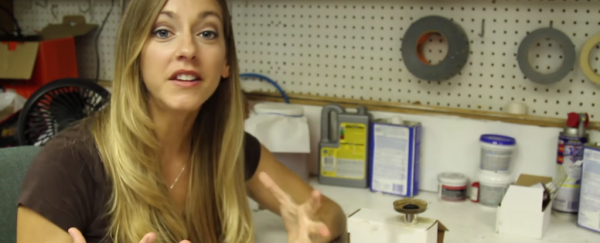Trust Physics Girl to come up with the most awesome combination of strange liquids ever - ferrofluid, which is that eerie, shiny black substance that forms weird 'spikes' when exposed to magnets, and glow stick goo. In the video above, we see what happens when you take this glowing liquid, mix it with ferrofluid, dim the lights, and break out the magnets. I know what I'm about to say makes absolutely no sense, but it looks like a religious experience for aliens.
Not only is this chemical reaction incredibly beautiful and weird, it's loaded with fascinating physics, from what's causing those spikes, to why the mixture is organising itself into little worm-like patterns.
First off, those spikes don't just form randomly - they all point in the same direction as the magnetic field lines coming from the magnet. You can see these lines in the video as they emanate up over the surface of the magnet, so when you're watching ferrofluid spikes move in response to a magnet, you're actually seeing the strength and direction of its magnetic field.
And what happens when the magnetic field is aligned horizontally to the ferrofluid? Well, as the spikes can only form vertically, you instead get the stunning, wormy patterns in the liquid.
But why does ferrofluid react to a magnetic field like this anyway? When you think about it, ferrofluid is almost an impossible liquid. You'd need to add some kind of magnetic metal to it to achieve this reaction, but we all know that if you drop some metal into a liquid, it's going to fall straight to the bottom, not settle neatly into the mix.
Ferrofluid makers managed to overcome this by making the added particles of magnetite extremely tiny - we're talking about 10 nanometres across. As the video explains, these particles are small enough that even just their kinetic energy can overcome the magnetic attraction that would normally cause them to clump together and sink to the bottom.
Even cooler is the physics behind the formation of those alien spikes. I'm not going to spoil it, because Physics Girl does such an amazing job of explaining it herself, so just watch the video above to find out. You get the added bonus of seeing what happens when dry ice - which has been cooled to -78.5 degrees C (-109.8 degrees F) - comes into contact with ferrofluid. Let's just say the reaction isn't what you'd expect…
